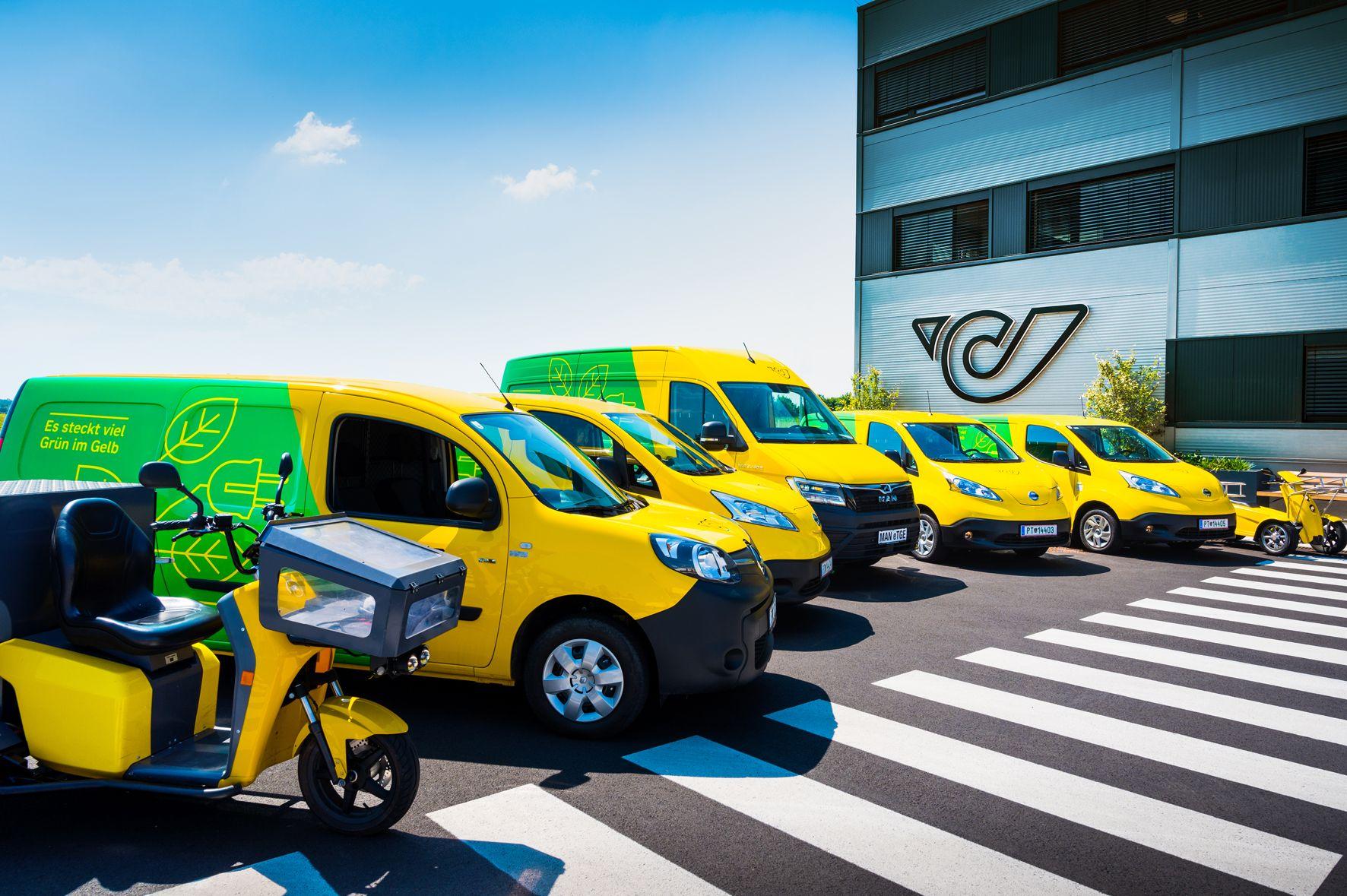Austria's largest vehicle fleet is to be completely emission-free by 2030. With a charging solution consisting of thousands of AC and DC charging points and the ChargePilot® charging and energy management system, 50% of the Austrian Post fleet is already electric today.
Every location needs an individual solution
Together with Austrian Post, we have big plans: By 2030, the delivery fleet of over 10,000 vehicles for letters and parcels on the so-called “last mile” is to be completely electrified. Over 3,000 electric vans are already in use today, ranging from high-roof vans to large Sprinter-sized vans from various manufacturers. There are also more than 1,000 e-bikes, e-trikes and e-mopeds. A smart charging solution was needed to ensure that all these electric vehicles could be charged cost-effectively, safely and in a way that would benefit the grid.
First steps: lighthouse projects in Graz, Innsbruck and Salzburg
Initially, three pilot projects were identified, including the cities of Graz, Innsbruck and Salzburg. In Innsbruck, letters and parcels have been delivered in a climate-friendly manner since the beginning of 2024, with 145 electric vehicles and 126 charging points distributed across the Vomp logistics center and three delivery bases in the Innsbruck city area. At the same time, the “Green Salzburg” project was launched in summer 2023, which also provided 126 charging points for around 200 e-vehicles. By the beginning of 2024, we had already successfully implemented a total of around 2,900 charging points at 100 locations.
"Our strong commitment to sustainable logistics is gradually becoming visible in Austria. Salzburg is now the third provincial capital, after Graz and Innsbruck, in which we deliver CO2-free. Every year, we cover around 1.9 million kilometers in Salzburg purely electrically, saving more than 180,000 liters of diesel."
Peter Umundum,
Director of Parcel & Logistics, Österreichische Post AG
Smart charging for over 10,000 electric vehicles in future
In its planning up to 2030, Austrian Post is confronted with challenges such as premature battery wear. Austrian Post has been investing in e-mobility since 2011 and the first vehicles are now being retired. How do these vehicles perform in the cost balance? Can the positive calculation work out?
In addition to electrifying the fleet, the focus is now on testing innovative technologies such as second-life storage with batteries from decommissioned delivery vehicles.
"It's not quite perfect yet, as things change quickly and dramatically. But that is part of experimentation and innovation. It's better to be active and adapt than to end up missing the boat."
Paul Janacek,
Head of Group Vehicle Fleet, Österreichische Post AG
Thousands of charging points at a glance
Our ChargePilot® ensures that all electric vehicles are charged reliably and efficiently without overloading the available grid connection. ChargePilot® controls the charging of the vehicles in real time either by staggering or throttling the power, while also taking into account other electricity consumers at the location. This keeps operating costs low and avoids expensive grid expansions. ChargePilot® also enables the prioritized charging of certain vehicles and the transmission of data for preconditioning via open interfaces. Monitoring and reporting is at the heart of the system, as active system monitoring is essential in a critical area such as the charging of delivery vehicles.
"Electrification does not end with the fleet. A high level of expertise in software is becoming increasingly important, and this is where the wheat is sorted from the chaff: because in the end, the software decides whether and how electric vehicles can be used profitably in a fleet like ours. We have already achieved this very successfully with The Mobility House Solutions."
Paul Janacek,
Head of Group Vehicle Fleet, Österreichische Post AG

A more climate-friendly and economical delivery fleet
Austrian Post's e-fleet is already cheaper than it would be with combustion engines. The savings in fuel costs alone amount to 40-60 percent, and service costs are also significantly lower. Up to now, Austrian Post has specifically implemented e-mobility in areas where there is sufficient connected load for charging the vehicles in order to keep network expansion costs low.
In the future, it will also be important to electrify remote areas and develop locations where the energy supply from the power grid can be challenging. Austrian Post is increasingly relying on its own photovoltaic systems in combination with battery storage systems. The company benefits from the fact that it can also use batteries from decommissioned delivery vehicles for stationary storage, as it operates a purchasing rather than a leasing fleet. This second-life approach, in which we have been successfully active for many years, further improves the already good cost balance of the e-vehicles - and makes both the fleet and Austrian Post's electricity procurement even more sustainable.


